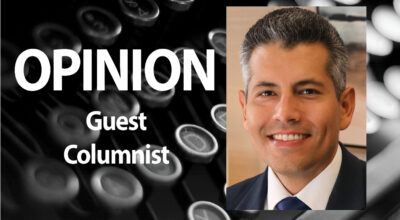Project Success is based on Good Planning:
Published 8:25 am Saturday, April 2, 2016
By Duane Gordy
The difficulty, many times, in a project is keeping things organized and in order. When attempting any puzzle, the first thing you do is turn all the pieces face up, and keep the picture on the box in sight.
Like a good puzzle, many good projects die because someone tries to put step 8 in front of step 2 or even worse, tries to build the whole thing before you even decide how to pay for the project. That same error has helped many projects get built which never should have started.
What we have done is rearranged the process just a touch. We want to make sure we know where the money is coming from, long term, before beginning the development of a project.
We were amazed to learn this has never been the first step. The first step has always been to determine the tax dollars available. To reiterate, this development comes at no cost to taxpayers. Then using formulas to distribute the funds to all the needs. If there is not enough, they look for ways to rearrange the funding to at least get the project partially built, or we sit on the funds until we have the ability to pay for the project. This is how the process was done 15 years ago, but not anymore. We began issuing debt to make up for the lack of balance between the revenue collections and project needs.
What this means to this project is very simple. There is a financial constraint for several needs that this one project could address. However, the first step should be to identify where the money can come from to pay for the need. Otherwise, any one need that has to be addressed will have to pay for itself. So growing new trees that can’t be harvested will pay for the need HOW? Drainage issues that need significant amounts of dirt to be used to capture floodwaters come from WHO? Servicing congestion and growth that is expected comes from WHICH taxpayers? The honest truth is that all of these questions can be addressed if local government can agree on using methods to meet financial needs that COULD BE the solution for all of these issues. In this case private capital is asking if they can use a user fee or toll to recoup their investment. If that is ok with local governments, then there is a reason to move forward to the next level. If the answer to that question is no, then it’s up to the taxpayers to find the money or not build any project.
Currently resolutions are being requested that approve the business model using a toll. That is all that has been requested. The business model is to allow further study of the development. This is the only approval needed at this time. Other issues can be dealt with as the model develops. The need for a collaboration to begin that defines the project will be one of the next steps, but not until the money is earmarked for project development.
The focus on project issues can be addressed by looking to the entities that should be stakeholders in the development. This is true for not only this particular project, but for all projects. The ability to create an environment where those who have specific need who would be a part of the project. This is true for county governments that need to be first in line to promote general growth and safety. The city governments have direct implications that will need additional planning to work through to protect positive growth. The local associations that want to provide for an eco-friendly environment that will promote tourism in Orange and Jefferson County exactly like what Hardin County enjoys. The Federal Parks system has specific needs that are also a concern for the project. They have voiced a concern over a large portion of the area the project is to pass. The need for fresh water infusion into the area is critical for a positive redevelopment of an area that was added to the parks system in 2009.
Duane Gordy is Executive Officer of the Community Development Education Foundation. He can be reached at dgordy@mail.com





